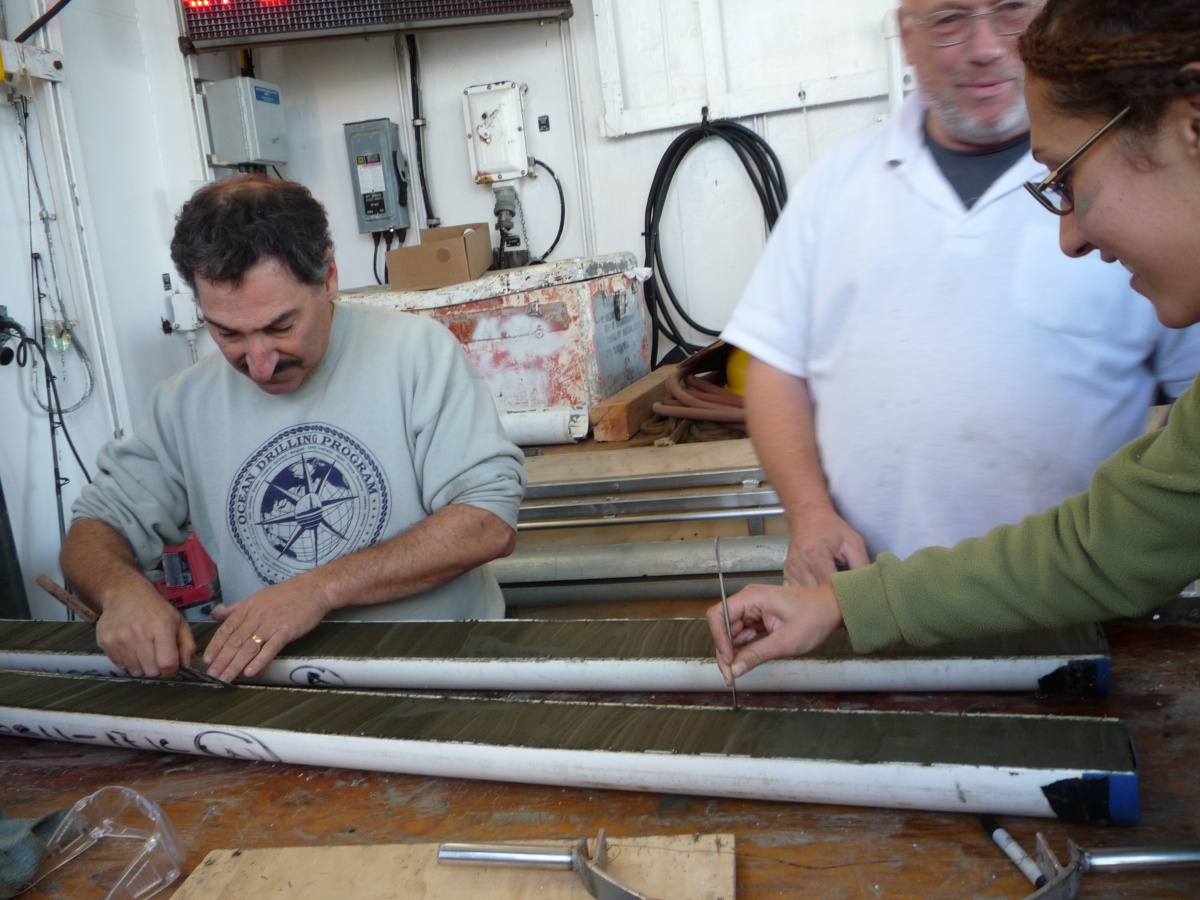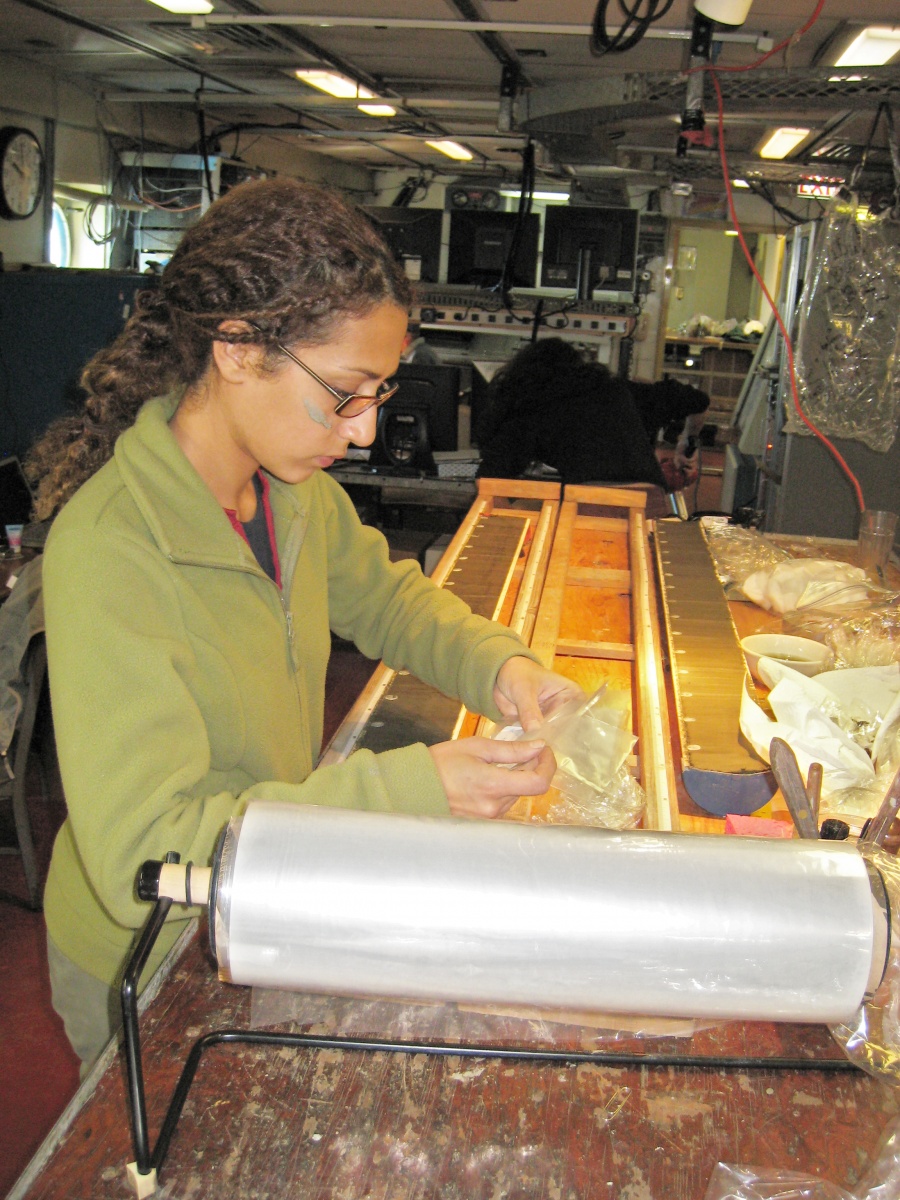Changes Of Season
The recent United Nations global climate conference considered possible effects of a temperature rise of just a few degrees.
But imagine a series of ocean temperature fluctuations of up to 9 degrees Fahrenheit, from icy to warm, each occurring in as little as 50 years?

Evidence of that comes from the seafloor in the middle of the Santa Barbara Basin, where tectonic folding lifted deep, ancient sediments closer the surface where they became easier for scientists to study and sample.
In a recent study published in the journal Paleoceanography, researchers including CSULB geological sciences Professor Richard Behl discovered that a series of abrupt and rapid temperature switches occurred as the earth shifted from an ice age to warmer periods occurred about 631,000 years ago.
In 2005 and 2008, scientists supported by the National Science Foundation including Behl; James Kennett, Craig Nicholson and Christopher Sorlien of UC Santa Barbara; Walter Dean of the U.S. Geological Survey and others including several CSULB students recovered nine- to 18-feet-long sediment cores from the Santa Barbara Basin floor from aboard the R/V Melville.
“With detailed seafloor seismic images, we took over 30 cores that were targeted to sample different time windows in the past. We didn’t know exactly what each story might tell, but with one core, we were very fortunate,” Behl said. “This core not only captured what we call a deglacial episode where the earth shifted from a glacial ice age to a warm interglacial period like we have today, but it was a very important one.
“It was the first big, dramatic climate shift of the last several million years,” he continued. “Prior to that time, the earth’s climatic fluctuations were shorter and milder.”
The earth then went though a transition during the middle of the Pleistocene epoch where cold and warm periods became more extreme in temperature. The sediment sample in this study spanned the very first transition in the Pleistocene from an extremely cold ice age into a warm climate.

The study uncovered several remarkable occurrences, Behl said. Deglaciation to a warmer climate took place in a number of very rapid steps. “We found that temperatures at the surface of the ocean initially increased about 8 to 9 degrees Fahrenheit or 4 to 5 degrees Celsius in about 50 years and that’s a mind-boggling amount of change,” he noted.
The researchers found evidence that three icy-to-warm cycles took place within approximately 700 years 631,000 years ago. Each step of warming took place in only a few decades. These transitions can be dated so precisely because the core includes volcanic ash from the last major Yellowstone supervolcano eruption, which spread ash as far as the Pacific.
They also found evidence that the melting of frozen methane hydrates on the seafloor were triggered by the climate cycles and released methane into the water and possibly into the atmosphere, said Behl, who also is an expert on hydrates.
He explained that these deposits form just below the surface of sediments when extreme cold or high enough water pressure traps methane seeping from underground and forms a special kind of ice. “The stability of methane hydrates depends on it staying cold or under high enough pressure.” Analysis of the core revealed sediments affected by several episodes of methane release. One was during the coldest time of the ice age when sea level dropped, relieving pressure on the hydrates, while others occurred during deglacial periods when water warmed.
“This is one of the oldest records that’s every been recovered and studied where earth scientists can look at how the earth naturally functions with decadal-scale resolution,” Behl noted. “We’ve captured details at a level no one has seen before of this very important climatic transition from the first very cold ice age into a warm interglacial and we found that it was much more complicated and irregular than the more recent changes from ice ages to interglacials.”
Their article is “Abrupt termination of Marine Isotope Stage 16 (Termination VII) at 631.5 ka in Santa Barbara Basin, California,” Paleoceanography, http://onlinelibrary.wiley.com/doi/10.1002/2014PA002756/full.
Written by Anne Ambrose






